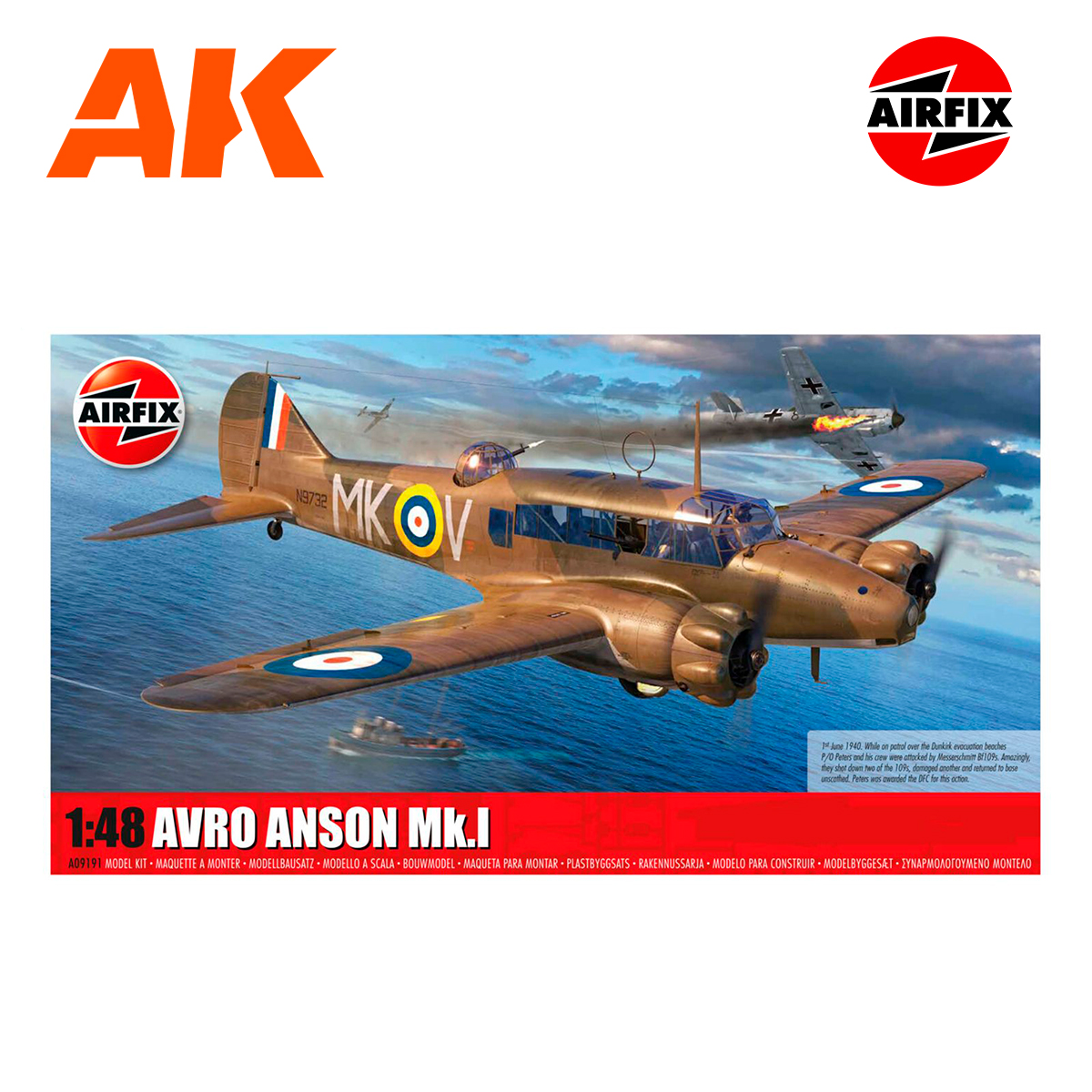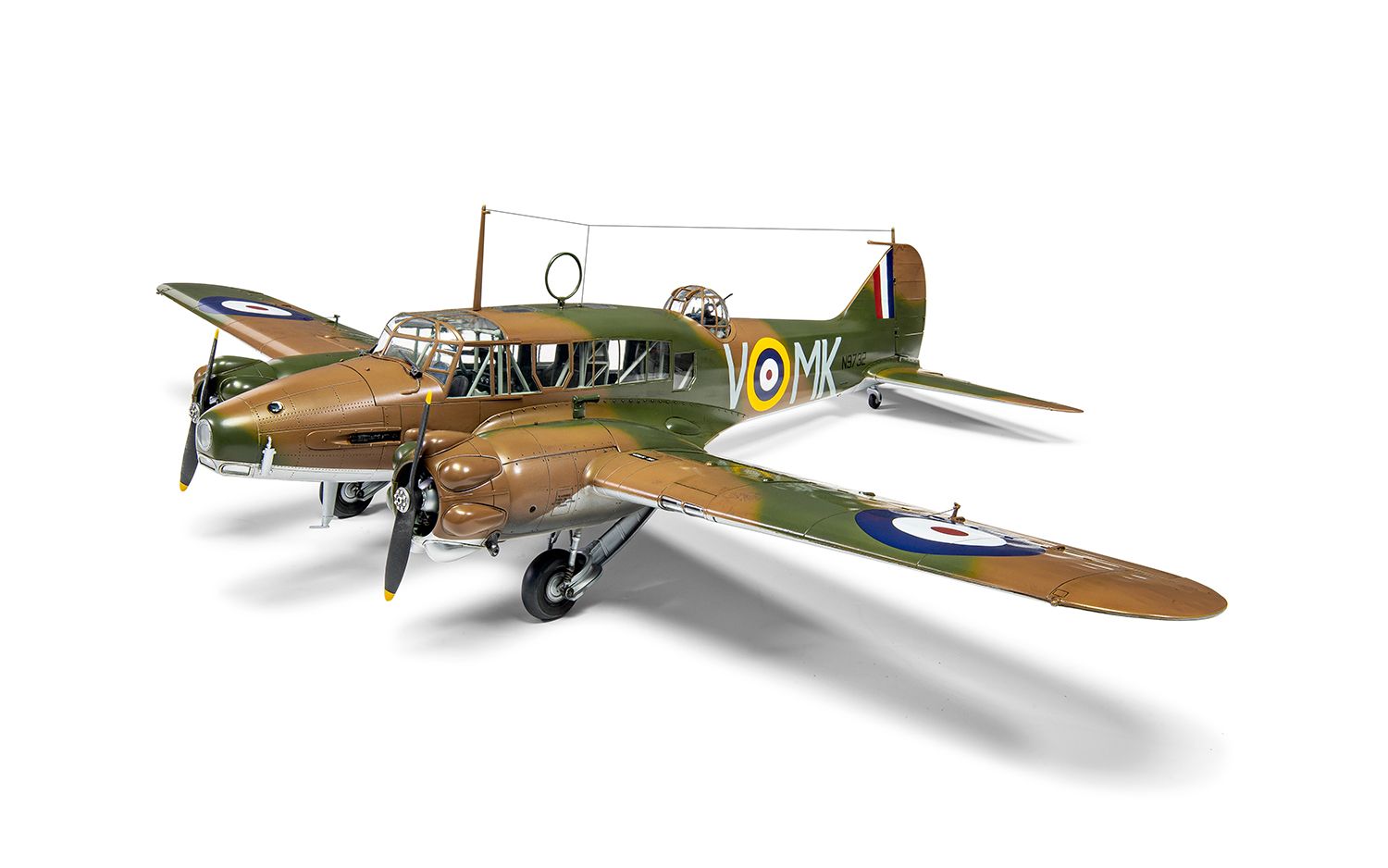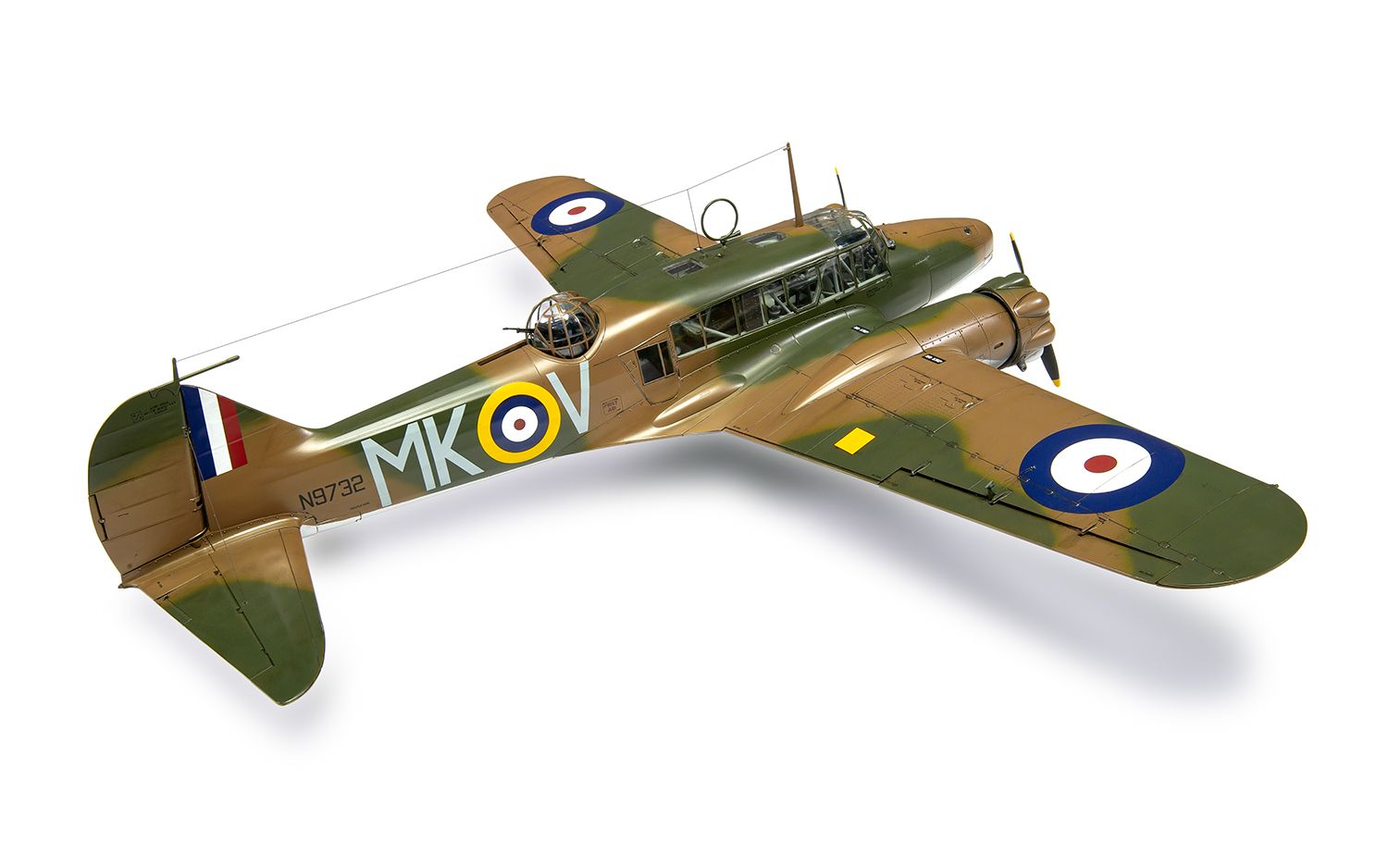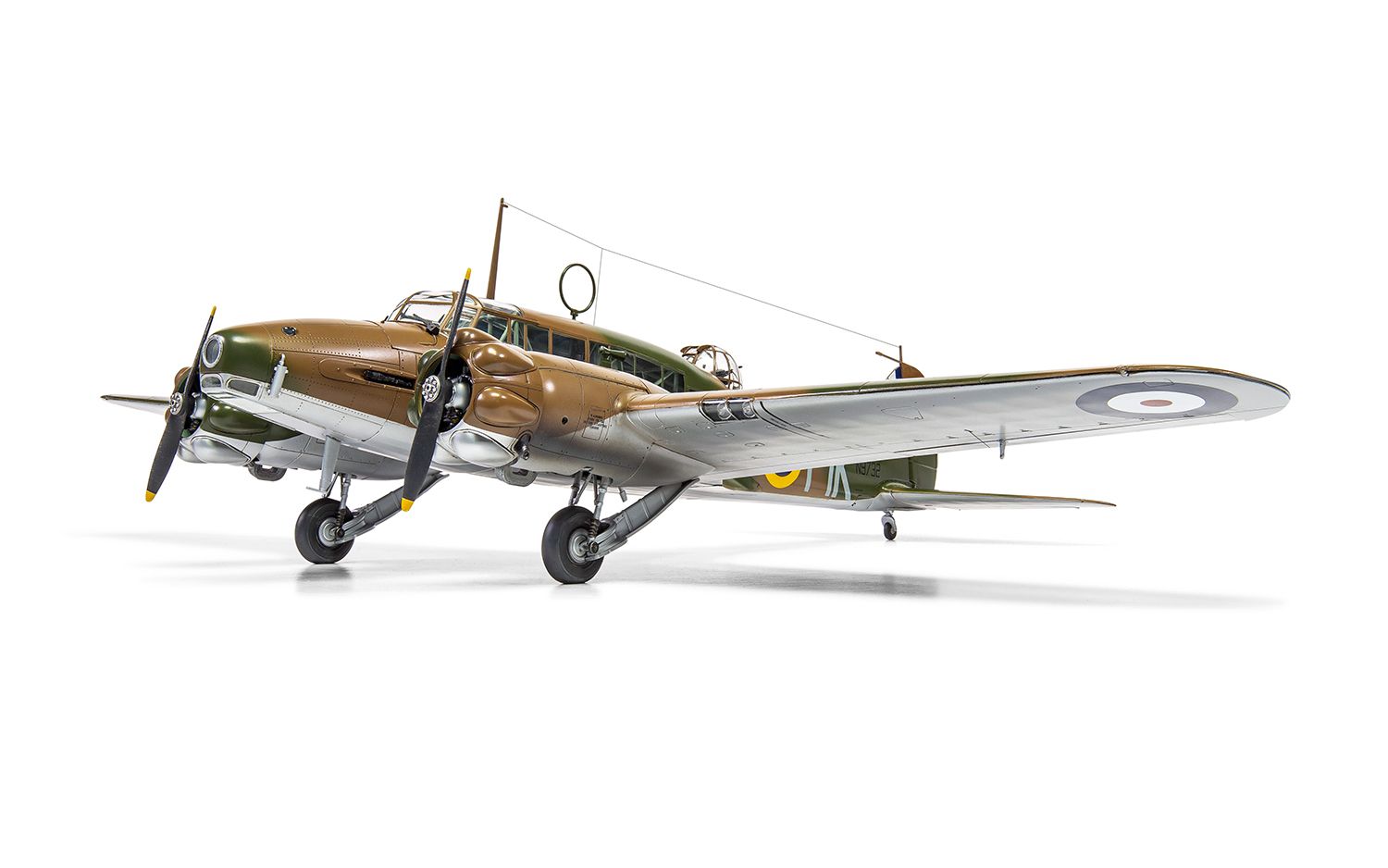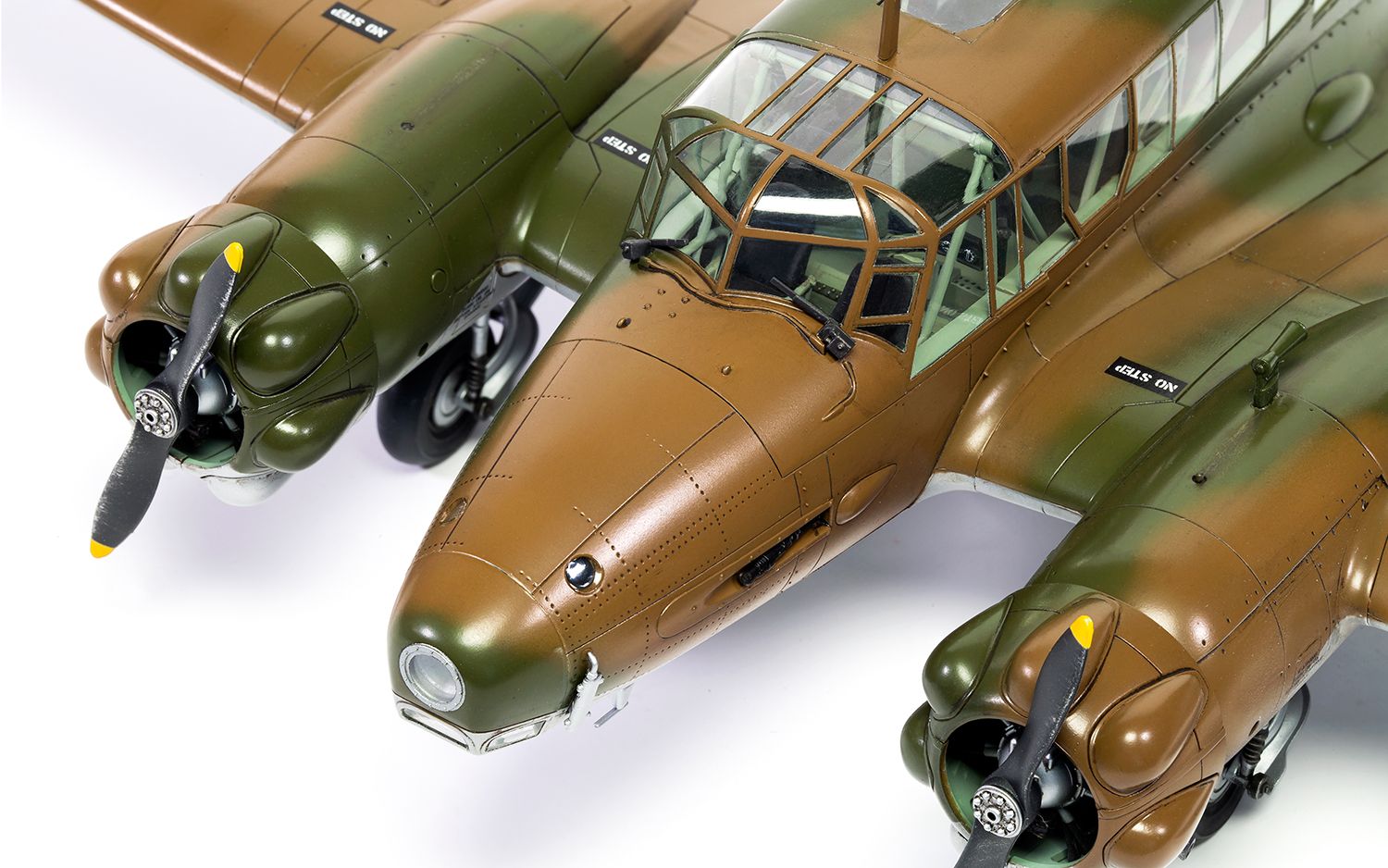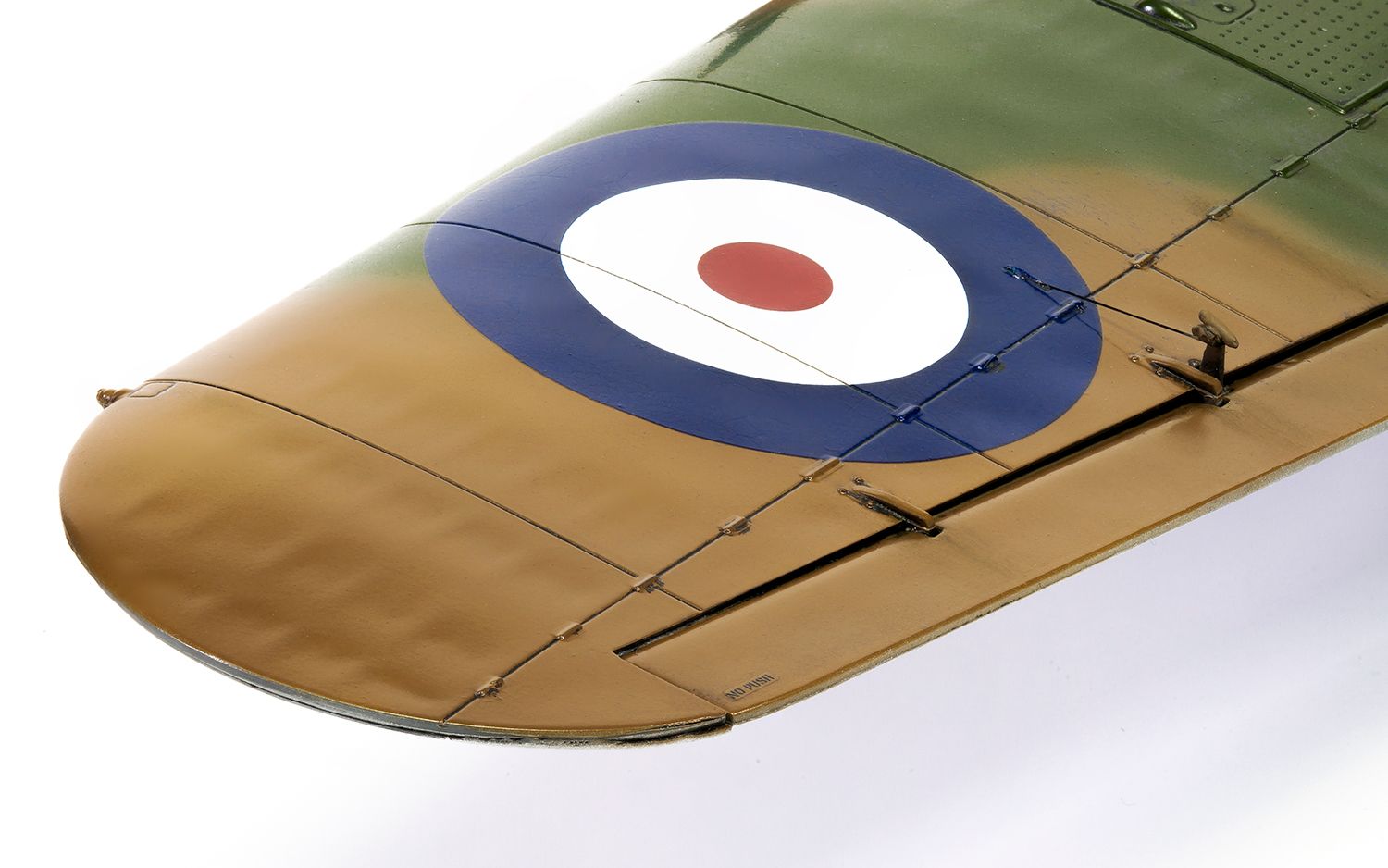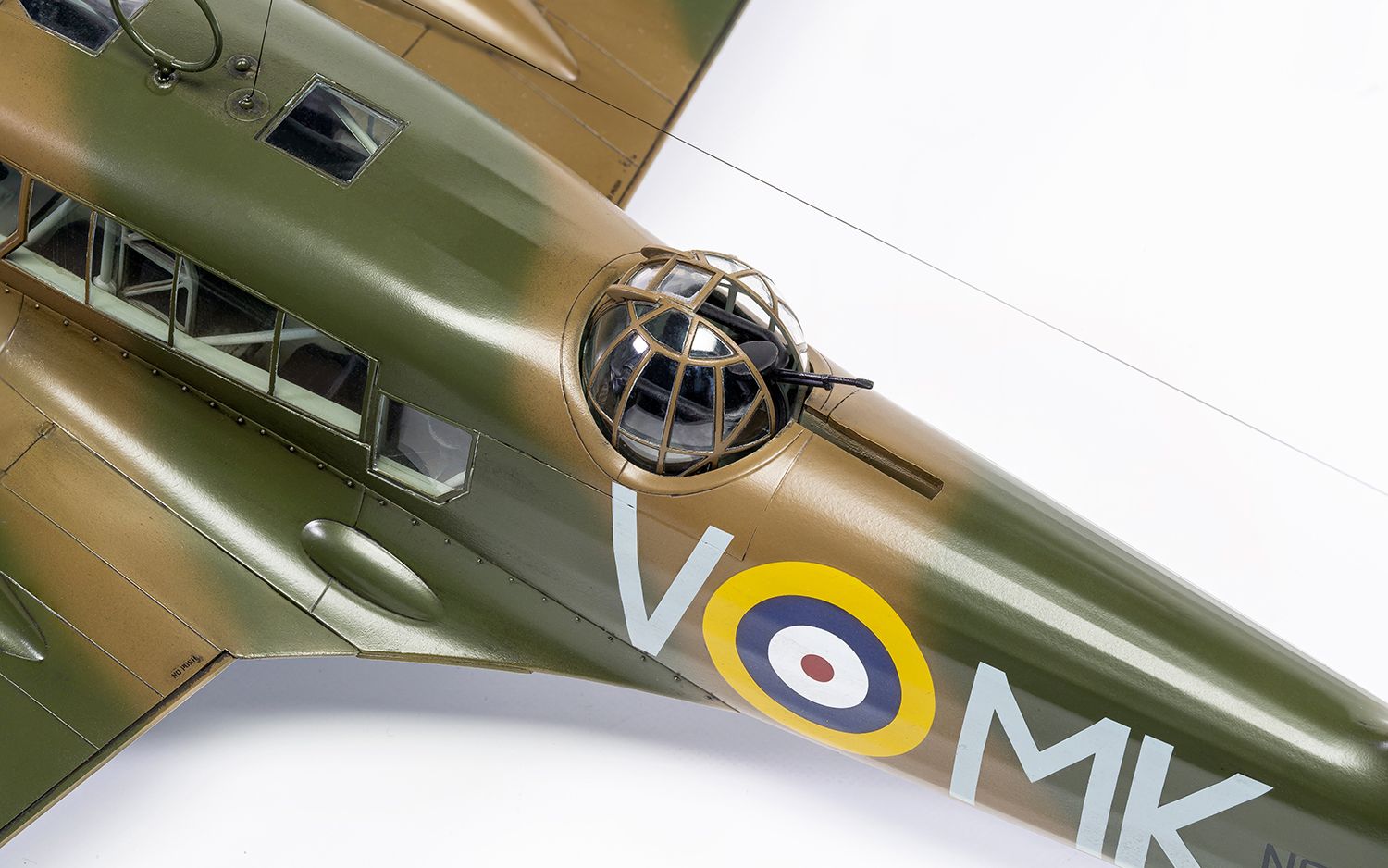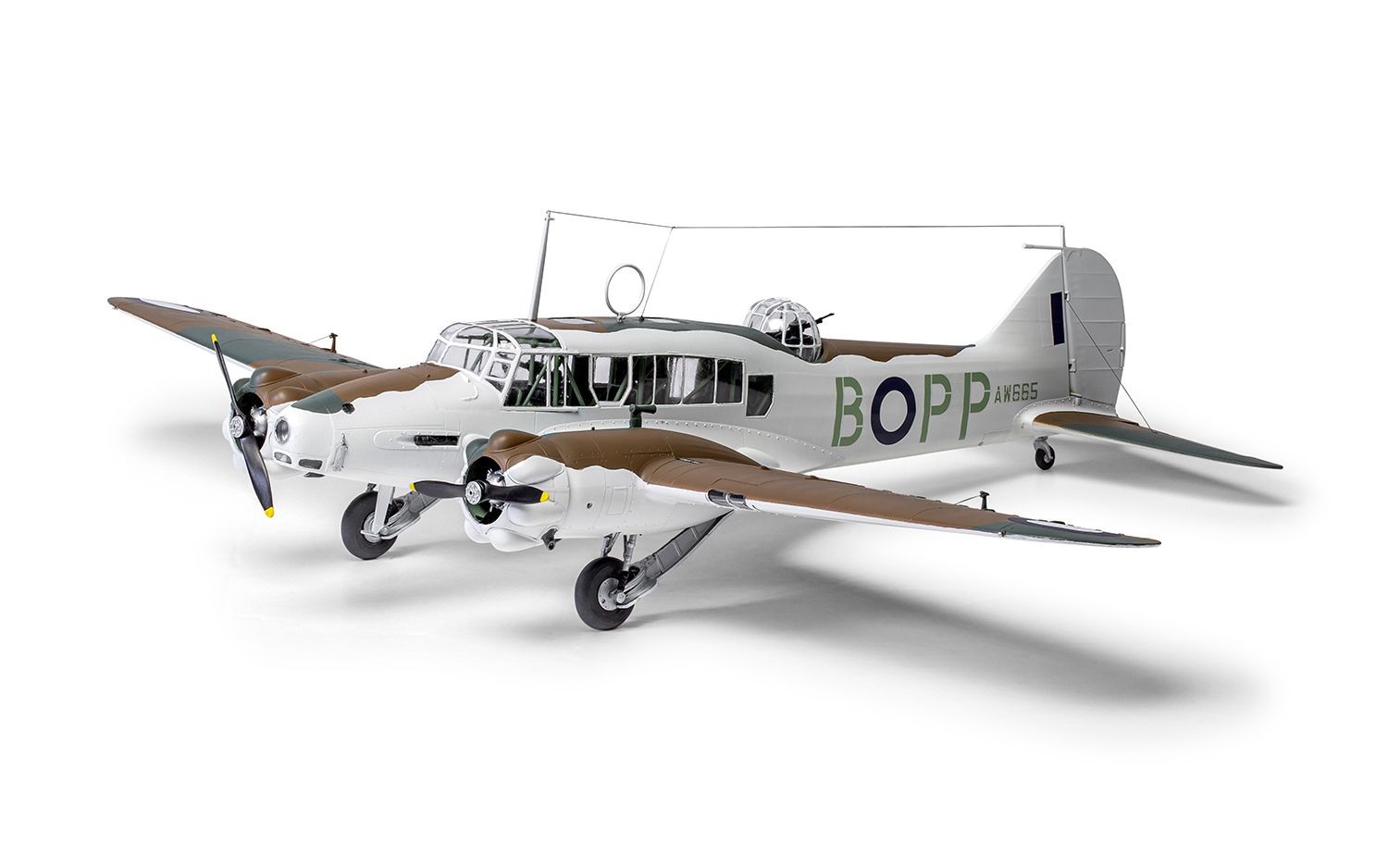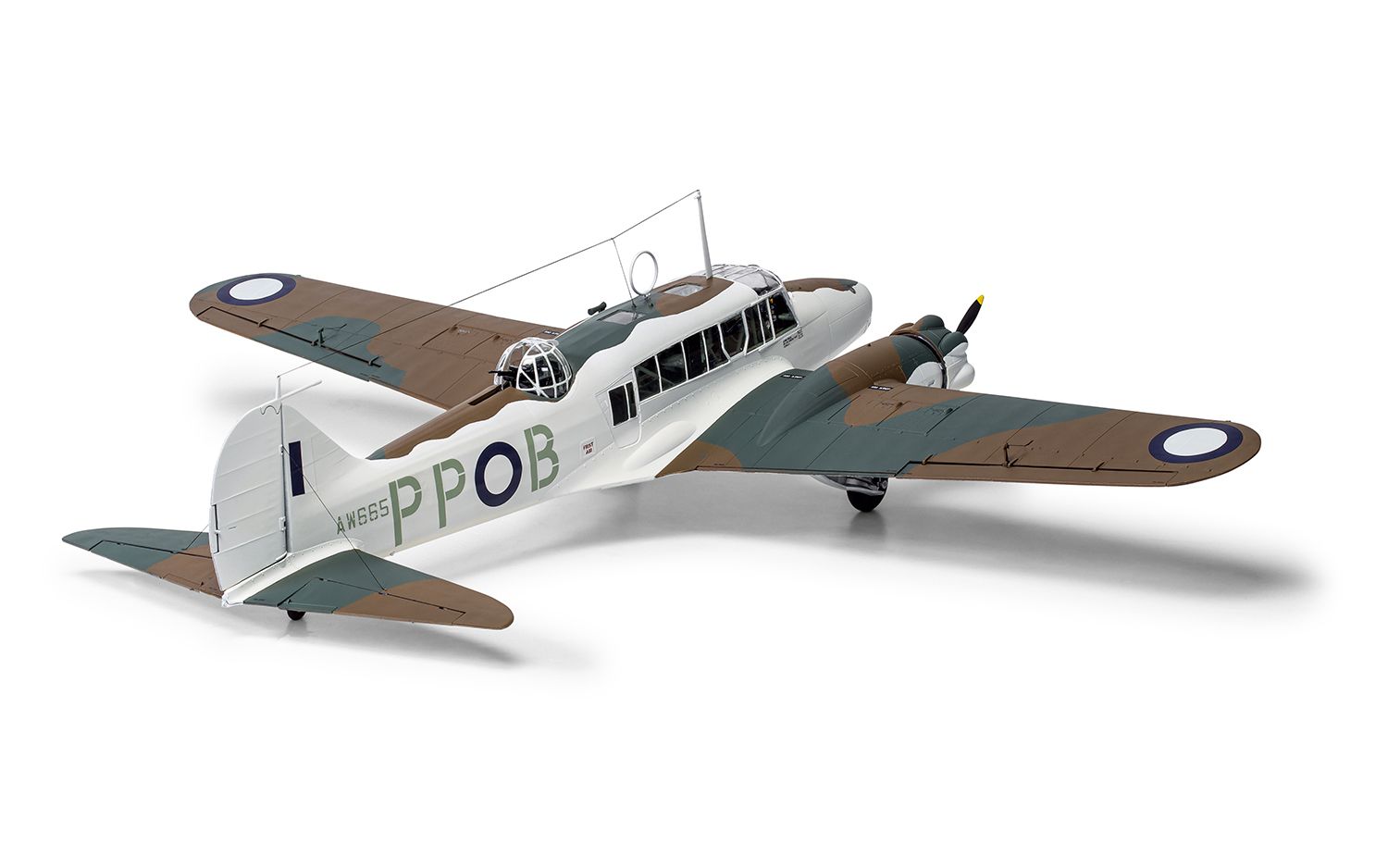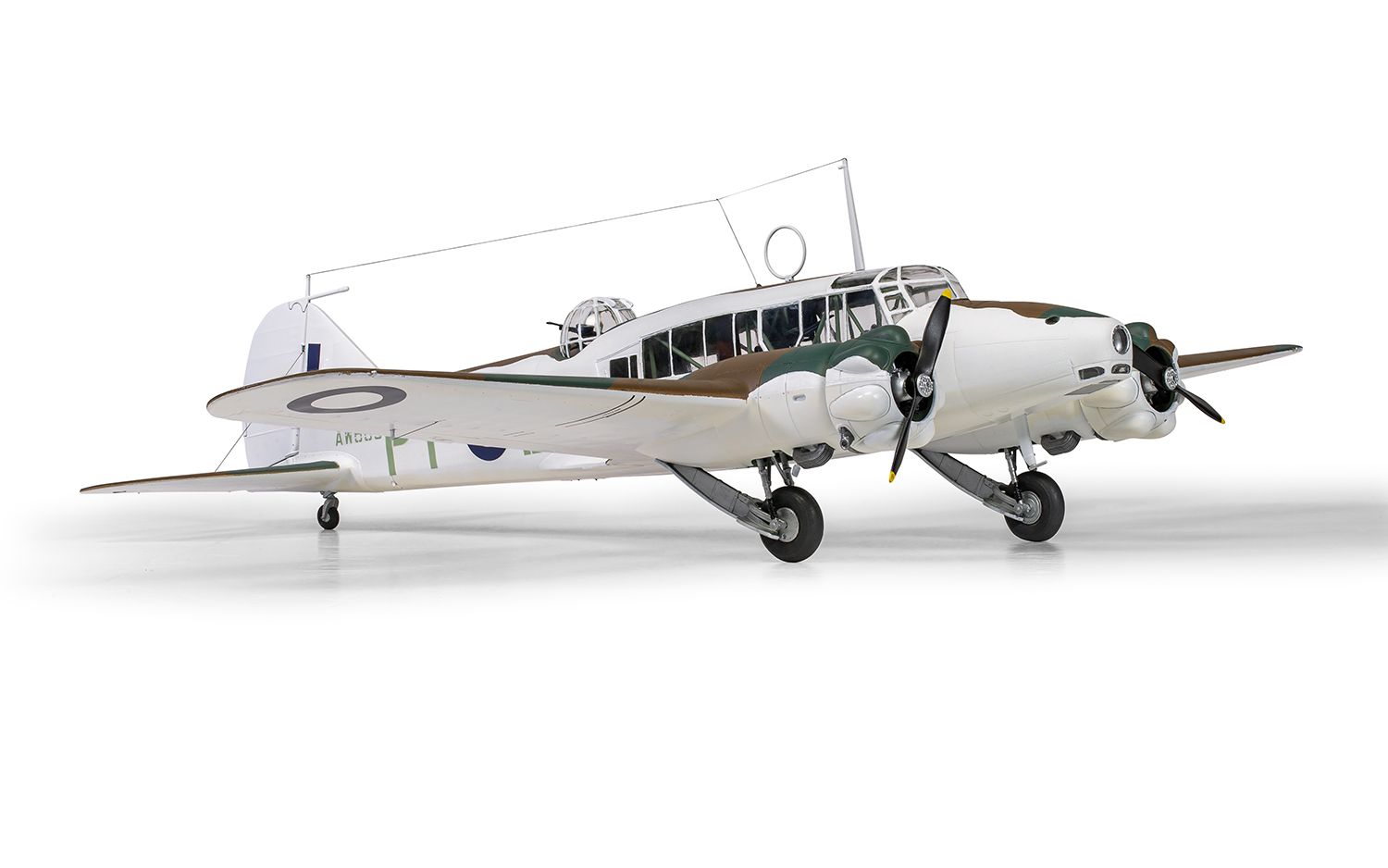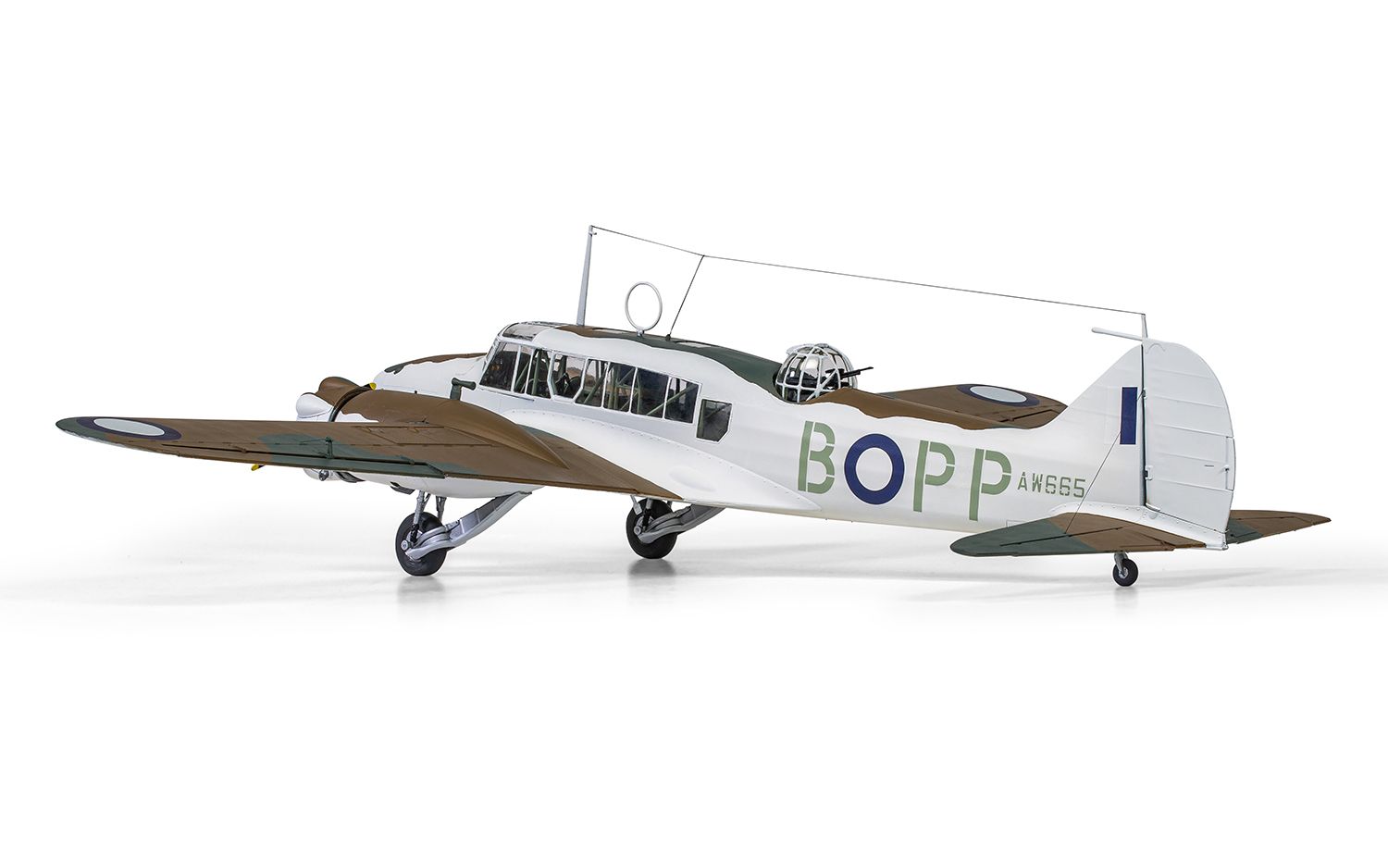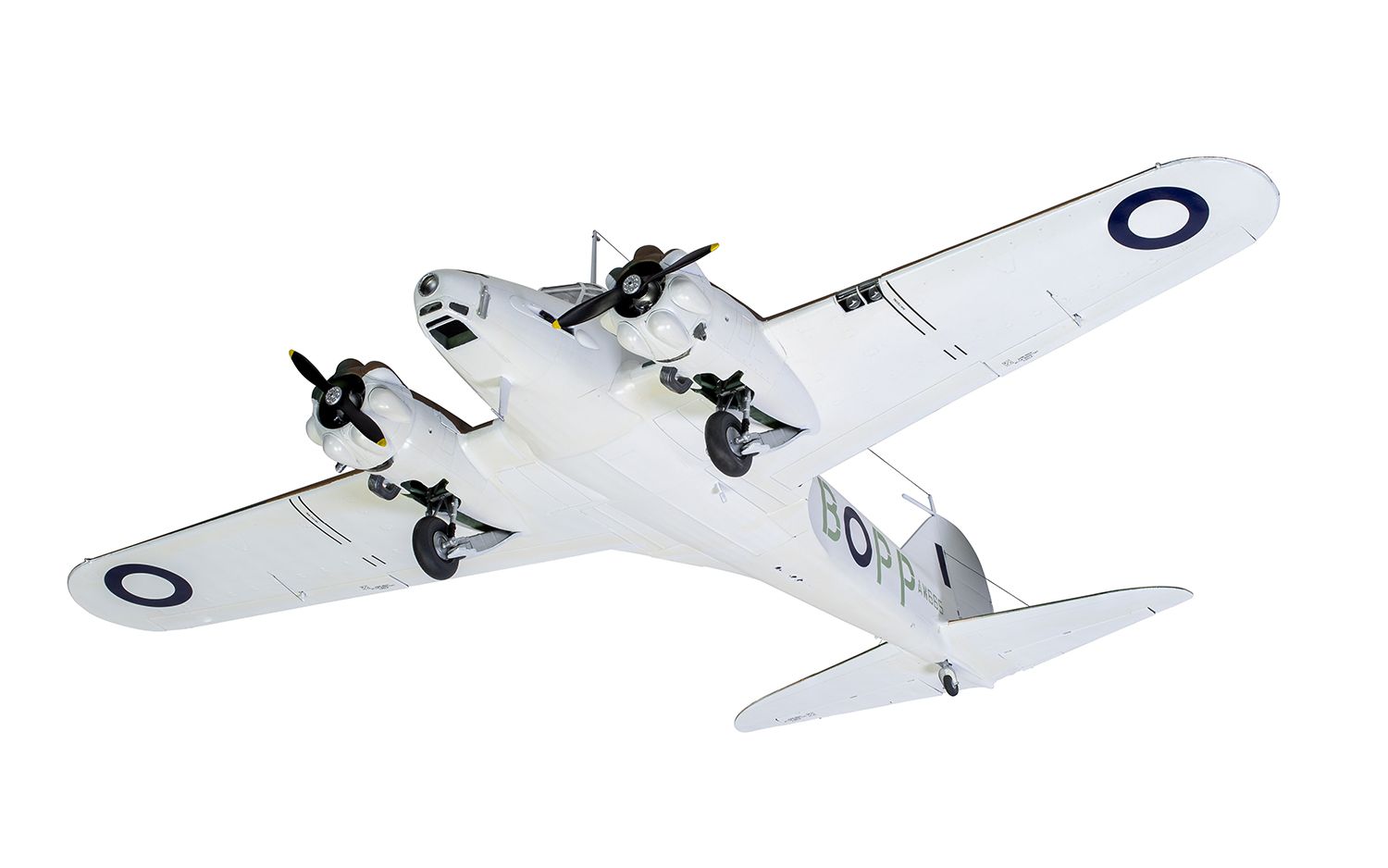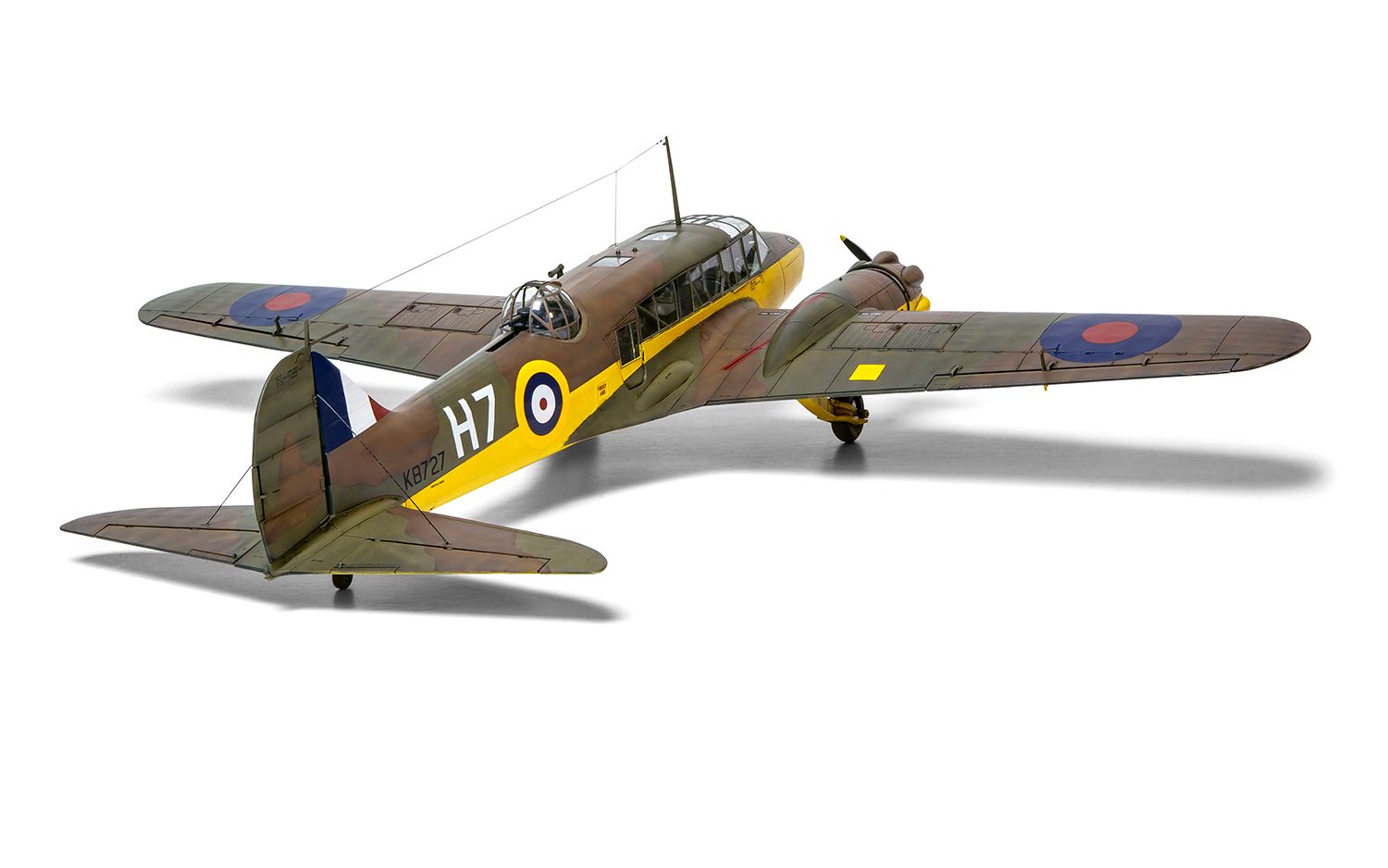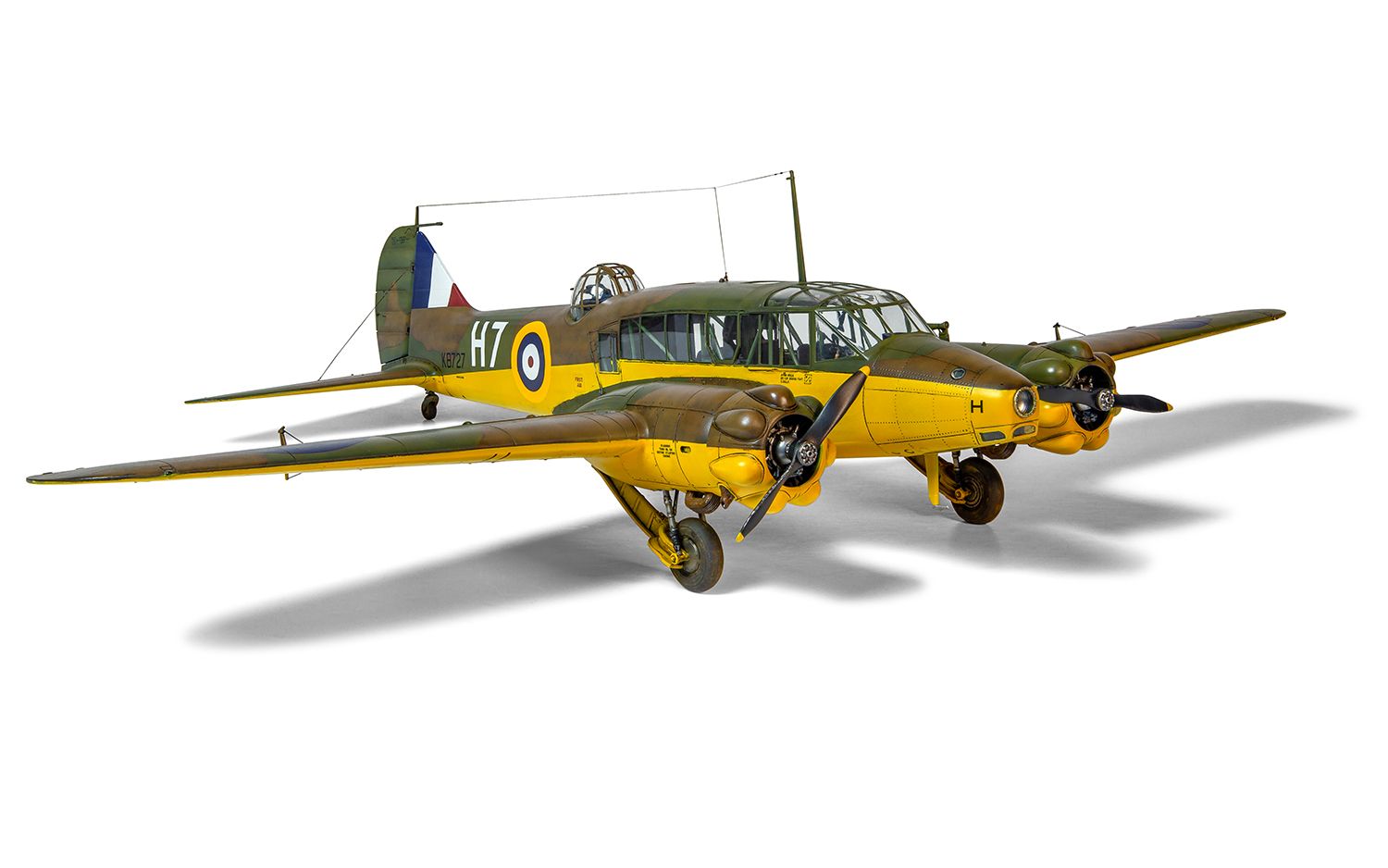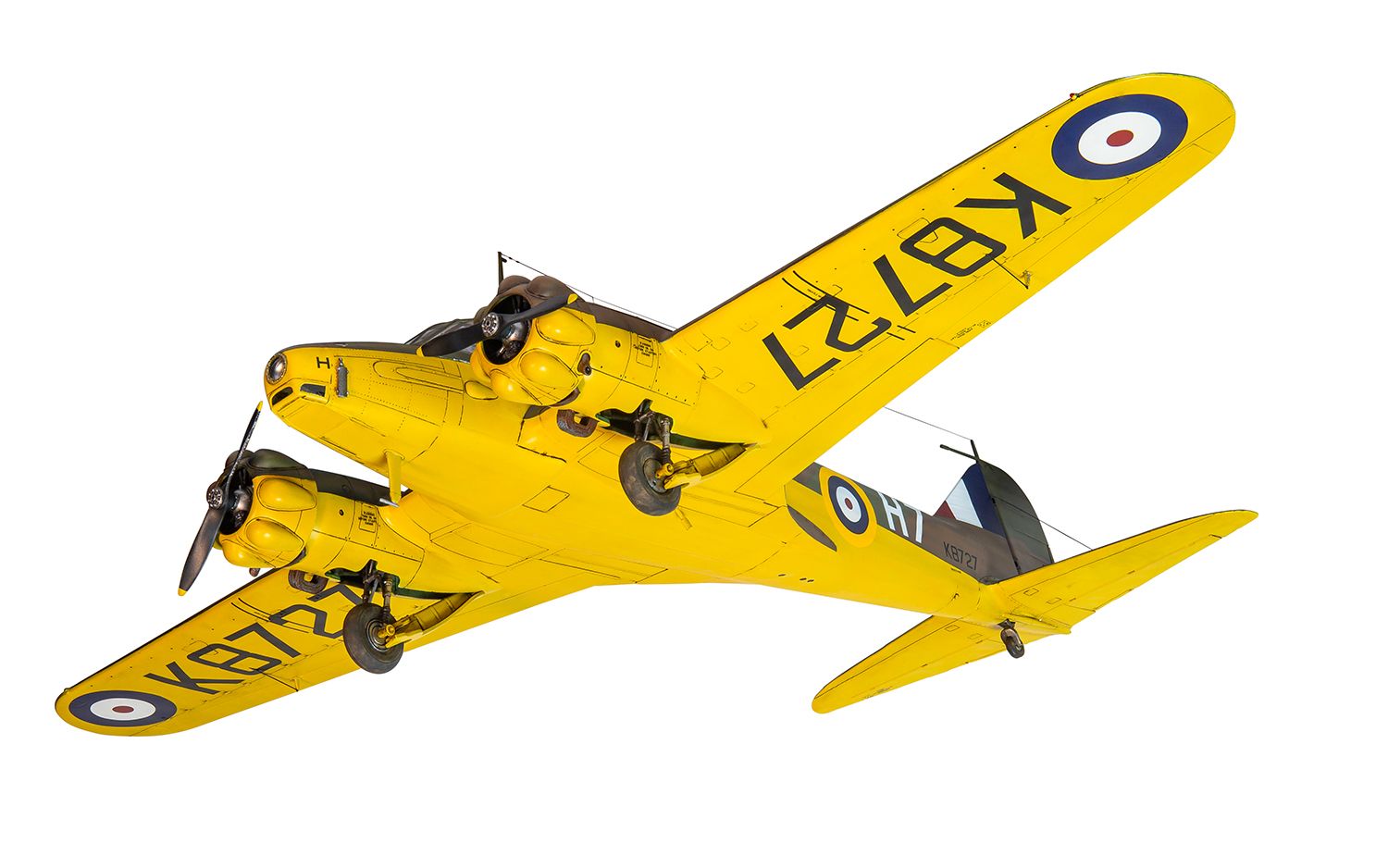Avro Anson Mk.I 1/48
51,95€
Hay existencias

*Please check our Privacy Policies to see how to we use your personal data.
*Por favor revisa nuestra Política de Privacidad para ver como tratamos tus datos personales
Although not generally regarded as one of the most fashionable British aircraft to see service during the Second World War, the Avro Anson was nevertheless one of the most important aircraft not only of the inter-war years, but also during WWII itself and is deserving of more recognition than it usually receives. An aircraft which began its development in 1933 as a high speed, long range, modern mail carrying charter aircraft, the Avro 652 was still in development when the British Air Ministry issued a requirement for a twin engined, general reconnaissance and multi-role aircraft capable of performing a variety of roles for both the Royal Air force and the Royal Navy.
The Avro team felt that their new aircraft would be perfect for the role and later entered it in an official evaluation programme with the competitor de Havilland DH89M, the military version of their biplane Dragon Rapide. The Avro design was found to possess greater range and endurance and whilst not without a few areas which would require some design modifications, an initial order for 174 militarised aircraft was placed. The Avro 652 would be given the name Anson after an Eighteenth Century British Admiral of the fleet, a development which did not please everyone at the Air Ministry, but as the aircraft was intended to undertake maritime patrols, the name did seem rather appropriate.
Highlighting the importance of the Avro Anson as a British aircraft type, when it entered service with No.48 Squadron at RAF Manston in March 1936, it became the first monoplane type to achieve squadron service status, but was also the first RAF aircraft to feature a retractable undercarriage. At this time, the advanced Anson quickly began to attract attention from several other countries and in order to capitalise on this interest, some aircraft were diverted from existing RAF orders to fulfil these requirements, with full production forcing Avro to open new manufacturing facilities in the North West of England. The RAF Anson Mk.I was equipped with a fixed forward firing .303 machine gun operated by the pilot and a single Lewis gun mounted in the manually traversed dorsal turret. It could also be equipped with a modest bomb load, something which was required by submarine hunting aircraft operated by Coastal Command and whilst there were no reports of an Anson sinking a U-Boat, their presence would keep these feared hunters submerged.
During the Dunkirk evacuations, Ansons used to cover the operation came under attack by Messerschmitt Bf 109 fighters, which had real difficulty engaging the slow flying British aircraft. Consistently overshooting the Ansons, they came in the sights of the aircraft’s forward firing gun and astonishingly, two of the Luftwaffe fighters were shot down and a third was badly damaged, with all the Ansons escaping from the engagement unscathed. Despite the fact that the RAF entered the Second World War with 26 squadrons equipped with Avro Ansons, they were basically obsolete as a fighting machine and particularly for the ones assigned to Bomber Command, they were quickly withdrawn to secondary training roles, a task for which the ‘Faithfull Annie’ was particularly well suited. As part of the Empire Air Training Scheme, many thousands of aircrew destined for service with Bomber Command were trained both in the UK and overseas, including those destined to serve in the Avro Lancaster, the mighty bomber which was produced in some of the same factories previously used to produce Ansons.
With just under 11,000 Ansons eventually produced, the final RAF example was only withdrawn from service as a station communications aircraft in 1968.
Tech Specs
Item Length – Without Packaging (cm) 26.9
Item Height – Without Packaging (cm) 8.31
Item Width – Without Packaging (cm) 35.9
How many pieces will be found in the box opened by the customer? 175
Item Scale 1:48
Contents: Sprues and decals
Number of Scheme options 3
Skill Level 3
Flying Hours 3
Wingspan (mm) 359
Aunque generalmente no se le considera uno de los aviones británicos más de moda que entraron en servicio durante la Segunda Guerra Mundial, el Avro Anson fue, sin embargo, uno de los aviones más importantes no sólo de los años de entreguerras, sino también durante la propia Segunda Guerra Mundial, y merece más reconocimiento del que suele recibir. El Avro 652, que comenzó a desarrollarse en 1933 como avión chárter de alta velocidad, largo alcance y transporte de correo moderno, aún estaba en fase de desarrollo cuando el Ministerio del Aire británico solicitó un avión bimotor de reconocimiento general y polivalente capaz de desempeñar diversas funciones tanto para la Royal Air Force como para la Royal Navy.
El equipo de Avro pensó que su nuevo avión sería perfecto para esta función y más tarde lo presentó en un programa de evaluación oficial junto con el competidor de Havilland DH89M, la versión militar de su biplano Dragon Rapide. Se descubrió que el diseño de Avro poseía mayor autonomía y resistencia y, aunque no sin algunas áreas que requerirían algunas modificaciones de diseño, se realizó un pedido inicial de 174 aviones militarizados. El Avro 652 recibiría el nombre de Anson en honor a un almirante de la flota británica del siglo XVIII, algo que no gustó a todos en el Ministerio del Aire, pero como el avión estaba destinado a realizar patrullas marítimas, el nombre parecía bastante apropiado.
Para resaltar la importancia del Avro Anson como tipo de avión británico, cuando entró en servicio con el escuadrón nº 48 de la RAF de Manston en marzo de 1936, se convirtió en el primer tipo de monoplano en alcanzar el estatus de escuadrón de servicio, pero también fue el primer avión de la RAF en incorporar un tren de aterrizaje retráctil. En esta época, el avanzado Anson empezó a atraer rápidamente la atención de otros países y, para aprovechar este interés, se desviaron algunos aviones de los pedidos existentes de la RAF para satisfacer estas necesidades, y la producción total obligó a Avro a abrir nuevas instalaciones de fabricación en el noroeste de Inglaterra. El Anson Mk.I de la RAF estaba equipado con una ametralladora delantera fija del calibre 303 operada por el piloto y un único cañón Lewis montado en la torreta dorsal de desplazamiento manual. También podía equiparse con una modesta carga de bombas, algo que requerían los aviones de caza submarinos operados por el Mando Costero y, aunque no había noticias de que un Anson hundiera un U-Boat, su presencia mantenía sumergidos a estos temidos cazadores.
Durante las evacuaciones de Dunkerque, los Anson utilizados para cubrir la operación fueron atacados por cazas Messerschmitt Bf 109, que tuvieron verdaderas dificultades para enfrentarse a los lentos aviones británicos. Los cazas de la Luftwaffe fueron derribados y un tercero resultó gravemente dañado, mientras que todos los Ansons salieron ilesos del combate. A pesar de que la RAF entró en la Segunda Guerra Mundial con 26 escuadrones equipados con Avro Ansons, éstos estaban básicamente obsoletos como máquinas de combate y, particularmente los asignados al Mando de Bombarderos, fueron rápidamente retirados a funciones secundarias de entrenamiento, una tarea para la que el «Faithfull Annie» era particularmente adecuado. Como parte del Plan de Entrenamiento Aéreo del Imperio, muchos miles de tripulantes destinados a servir en el Mando de Bombarderos fueron entrenados tanto en el Reino Unido como en el extranjero, incluidos los destinados a servir en el Avro Lancaster, el poderoso bombardero que se producía en algunas de las mismas fábricas utilizadas anteriormente para producir Ansons.
Con algo menos de 11.000 Ansons producidos finalmente, el último ejemplar de la RAF no fue retirado del servicio como avión de comunicaciones de estación hasta 1968.
Especificaciones técnicas
Longitud del artículo – Sin embalaje (cm) 26.9
Altura del artículo – Sin embalaje (cm) 8.31
Anchura del artículo – Sin embalaje (cm) 35.9
¿Cuántas piezas se encontrarán en la caja abierta por el cliente? 175
Escala del artículo 1:48
Contenido: Matrices y calcas
Número de opciones de esquema 3
Nivel de habilidad 3
Horas de vuelo 3
Envergadura (mm) 359

